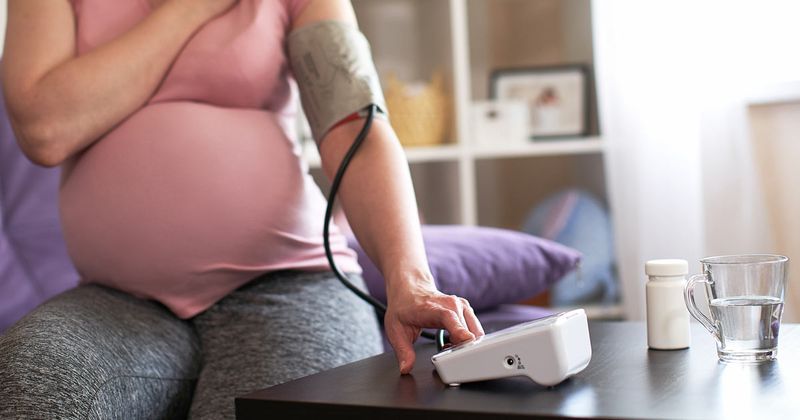COVID-19 increases risk for preeclampsia in women with chronic diabetes, hypertension
Pregnant women with preexisting diabetes or hypertension who developed COVID-19 were at higher risk for preeclampsia, according to a poster presentation at The Pregnancy Meeting.
Additionally, women with COVID-19 were more likely to have preterm births than those without the disease, researchers found.

“Pregnant women who contract COVID-19 are at higher risk of adverse clinical outcomes compared to nonpregnant women with COVID-19,” Ahmed S. Zaki Moustafa, MD, a second-year maternal-fetal medicine fellow at University of Mississippi Medical Center, said during his presentation. “Risk factors for severe respiratory disease in pregnancy include demographic factors such as non-white ethnicity, and pre-existing conditions such chronic hypertension, diabetes and obesity. Severe COVID-19 disease in pregnancy has been associated with greater risk of preeclampsia and preterm birth.”
Moustafa and colleagues compared the maternal and neonatal outcomes of the first 100 deliveries by mothers with COVID-19 (mean age, 26.81 years; mean BMI, 34.33 kg/m2; 52% Black) between April and October 2020 with 100 deliveries by mothers without COVID-19 (mean age, 26.65 years; mean BMI, 34.25 kg.m2; 54% Black) between January and December 2020 at the University of Mississippi Medical Center.
Women with COVID-19 were more likely to have a preterm birth than their counterparts (64% vs. 31%; P < .0001). Babies born to mothers with COVID-19 were significantly more likely to be admitted to the neonatal ICU than those born to mothers without COVID-19 (44 vs. 18 admissions) and to stay in the ICU longer.
Adjusting for diabetes, women with hypertension and COVID-19 were significantly more likely to have preeclampsia than nonhypertensive women with COVID-19 (adjusted OR = 4.3; 95% CI, 1.5-12.4). However, there was no significant increased risk for preeclampsia in hypertensive women without COVID-19 compared with their nonhypertensive counterparts (aOR = 2.6; 95% CI, 0.97-6.8).
“Similarly, when we adjusted for hypertension among women with COVID and diabetes, there was a significantly increased risk of preeclampsia compared to women with no diabetes (aOR = 3.9; 95% CI, 1.2-12.5),” Moustafa said. “Again, we did not see this increased risk of preeclampsia when we adjusted for hypertension among women with diabetes and without COVID (aOR = 1.3; 95% CI, 0.4-4).”
“Our results suggest that in the presence of hypertension or diabetes, a pregnant woman with COVID is at increased risk of developing preeclampsia,” he said. “Also, women with COVID were at significantly higher risk of preterm birth. Finally, neonatal complications were more likely among neonates born to mothers with COVID, even after adjusting for gestational age.”

